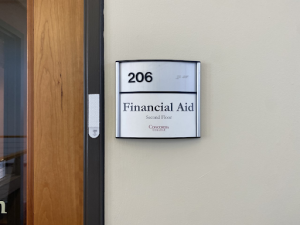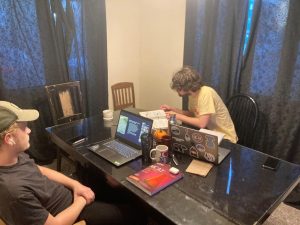By Steve Karnowski, Associated Press
MINNEAPOLIS (AP) — Restarting Minnesota’s economy will require a sharp increase in coronavirus testing, more contact tracing for those infected and continued efforts to isolate the most vulnerable people from exposure to COVID-19, Gov. Tim Walz said Monday.
The “smart, safe way to reopen the economy” will require state officials to “significantly ramp up our own testing capacity,” and more intensive efforts to track down people who have been exposed to infected individuals, Walz said in a conference call with reporters. Earlier Monday, he extended Minnesota’s state of emergency for 30 more days, giving himself the power to keep using executive orders to address the public health crisis through May 13. And the administration announced that Walz and his cabinet members will each take a 10% pay cut through the end of the year in response to the impact on the state budget.
The Democratic governor has been facing pushback from Republicans and business owners who have urged stronger steps to put the state back to work than the limited steps he announced last week. GOP President Donald Trump fueled the debate Monday by tweeting that he — not the governors — has the authority to “open up the states.” Walz responded that he’ll make his own decisions about what’s best for the health and safety of Minnesota, but that he can’t set a timetable yet.
The governor threw down a challenge to his team to independently increase the state’s testing capacity to around 40,000 per week or more — an ambitious goal given that’s about the number of Minnesotans tested since the pandemic began. He acknowledged it will be a “hard lift” but said it needs to happen soon.
“We all want to open up tomorrow, but people will die if we do that without having things in place,” Walz said “So there’s not a debate here about whether we need to get the economy open again. Of course we do. The debate and the strategy is, how do you do that in a way that ensures, as this virus continues on for next 12 months or whatever it takes to get a vaccine, that we’re in a place where we can weather these squalls.”
Since Walz issued his original emergency declaration March 13, he has used his powers to close schools, bars, restaurants and other places of public accommodation, and ordered Minnesotans to largely stay at home. He has also used those powers to make it easier for Minnesotans who lost their jobs to collect unemployment insurance.
Walz gave that order on a day when the state had confirmed just 14 cases and was still eight days away from reporting its first death. The Minnesota Department of Health on Monday reported 29 more confirmed cases, bringing the state’s total to 1,650. The state reported no new deaths Monday for the first time since March 25, so the death toll stood at 70.
The Minnesota Legislature is scheduled to meet Tuesday to pass a COVID-19 relief bill. Among the highlights are provisions that will: allow engaged couples to obtain marriage licenses online or by mail; make it easier for health care providers to use telemedicine; cover some testing costs; extend various deadlines and expiration dates; and codify temporary rules under which lawmakers can vote remotely and state agencies can exercise emergency powers. Lawmakers will also vote on a long-awaited insulin affordability bill that’s not related to the crisis.




Be First to Comment